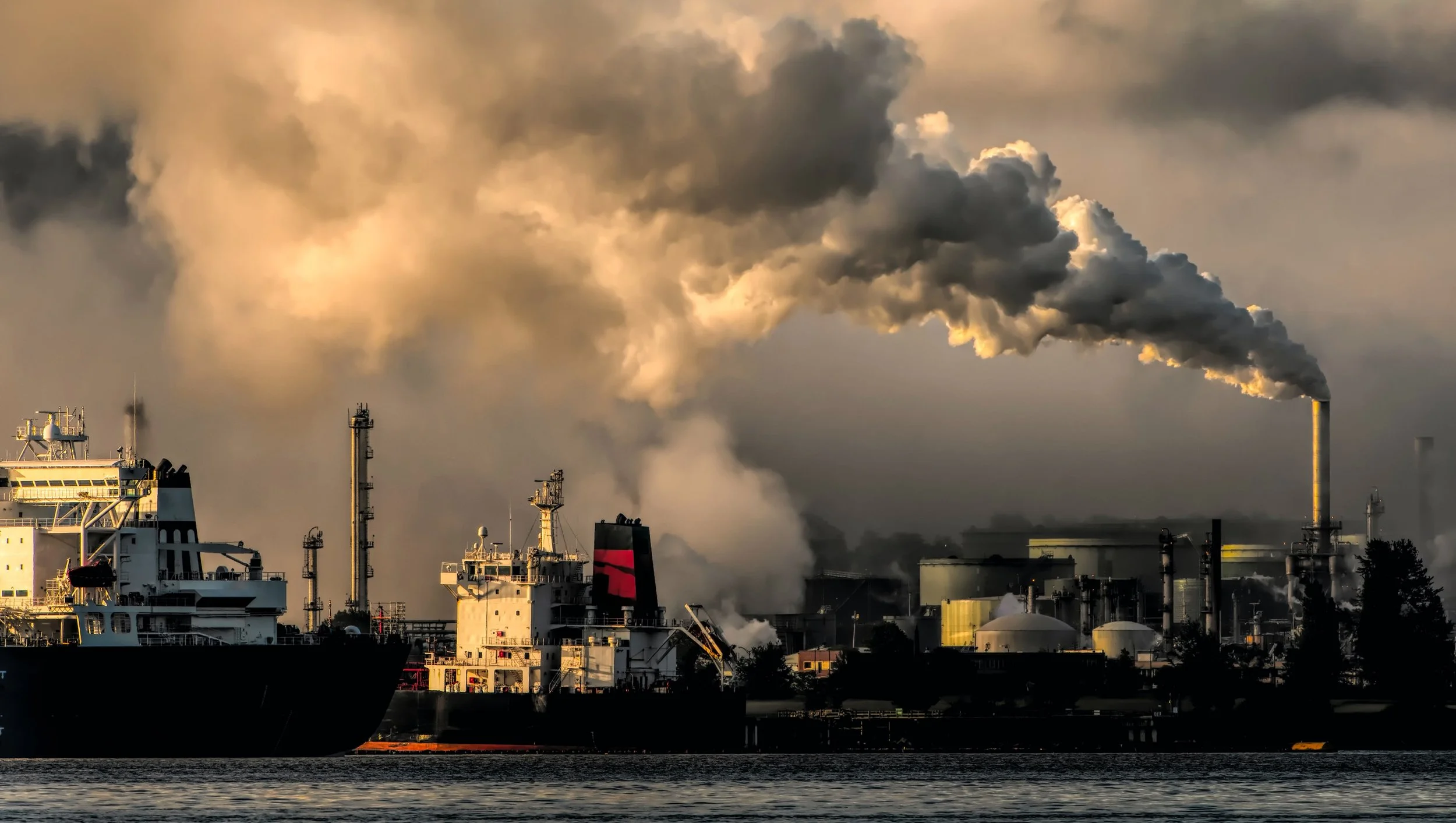Marine Shipping Creates 3% of Global Carbon Emissions
What can be done?
Image credit: Unsplash
by Jennifer Clare Ball
June 10, 2022
Growing up, Travis Schmauss enjoyed taking cruises with his family. That was before he knew how disastrous they were for the environment.
“I only later found out that they're atrocities for the climate,” said Schmauss, who recently received a doctorate under the supervision of Scott Barnett, a professor of materials science and engineering at Northwestern University. Barnett’s research group focuses on energy storage and conversion. Schmauss and Barnett co-authored an article in the September 2021 issue of ACS Energy Letters about the idea of using carbon capture to reduce emissions from shipping.
And it’s not just about cruise ships: About 3% of human-generated carbon dioxide emissions can be attributed to the marine shipping industry. Furthermore, approximately 90% of goods have been transported on a ship at some point in their life cycle.
During the past two years of the pandemic, many people have turned to purchasing goods online. Before their products arrive at their doorstep, the items have probably traveled on a large ship. The ships built today will surely be on the water decades in the future, according to David Babson, program director at the Advanced Research Projects Agency-Energy, or ARPA-E.
“[Shipping] is a foundation of the global economy and is not going away anytime soon,” said Jake Russell, a fellow at ARPA-E who focuses on reducing carbon in maritime shipping. Research for a Norwegian project on how carbon capture could be used on ships is underway, and a startup that began in a lab at the University of Michigan is focusing on carbon capture for semi trucks.
But Barnett and Schmauss’ research looks toward the future, which they think may involve solid oxide fuel cells (devices that produce electricity by oxidizing a fuel). The goal is to use this technology on large ships to have them go carbon neutral or carbon negative.
In their 2021 article, Barnett and Schmauss presented a conceptual schematic for an apartment-sized cell with a movable partition that would sit under these giant ships. It would store fuel on one side of the cell and capture carbon on the other. The system would superheat ethanol and pass it by a catalyst, which would break it into a hydrogen molecule and a carbon molecule. It would then add oxygen to each molecule to create water and carbon dioxide. The water would drip out, and the carbon dioxide would be sucked into a compartment and stored. The system’s solid oxide fuel cells would never dilute the carbon with air, creating a closed loop system. The type of fuel could be anything from fossil fuels to biofuels to electrolytic fuels produced with renewable energy. Once the ship’s journey is complete, the carbon would be sequestered, or injected and stored on land or beneath the sea floor.
Another option would be to recycle the carbon to make more fuel. Compared to alternative fuels, Barnett and Schmauss’ carbon capture system remains the only proposed solution that would enable large ships the potential to be carbon negative, according to Schmauss. Although no prototype exists yet, he said, “We’re doing the materials science — what the stuff is made of.”
Babson tends to think, however, that carbon capture may not be the best solution for long-range ships. Fuels that power ships are energy dense, which means they store a lot of energy in a small space. According to Babson, it’s not practical to have a giant cell below the ship to store carbon when other options exist, such as green hydrogen and ammonia fuels that don’t require large cells to sit under the ships.
Schmauss said that when it comes down to economics, his and Barnett’s carbon capture scheme would attract shippers because they could keep using inexpensive fuel, keeping their businesses profitable. However, the substantial cost to install the cell initially would still remain.
Right now, other options for reducing emissions from shipping, like green hydrogen and green ammonia fuels, come with a hefty price tag. “The cost of electricity is high, the cost of the reaction equipment is high, and the carbon intensity of the electricity on our grid presently is too high to make it reasonable,” said Babson.
Schematic illustration of a carbon capture fuel cell vehicle (CCFCV) and associated infrastructure. Reprinted and adapted with permission from ACS Energy Lett.2021, 6, 9, 3180–3184. Publication Date:August 18, 2021. Copyright 2021 American Chemical Society
Another option is producing battery-powered ships, Schmauss said, but very large battery-powered ships that travel across the entire ocean would simply not be able to make the journey. Babson and Russell agreed, but for smaller boats, like tugboats, battery power would be more realistic.
Scientists are calling for action because of the long life of a ship engine. The engines built today will likely still be traveling across the ocean decades in the future. As black stacks funnel smoke above ships into the atmosphere, the ocean also absorbs a portion of those carbon emissions. When the ocean absorbs carbon, it increases the acidity of the water, which in turn harms organisms like shellfish and coral. The ocean is warming, too, which contributes to natural disasters like hurricanes.
Before green fuels become more practical, when renewable energy scales up, transition fuels could also be an alternative, according to Geoff Lamdin, founder of SeaChange Group. Companies like the SeaChange Group are working to bring biodiesel fuels to market in the next couple of years. While the SeaChange Group’s fuel still consists of one-third petroleum, the other two-thirds are completely renewable, said Lamdin.
According to Lamdin, there are a number of reasons to switch to a transition fuel. Those in the shipping industry can avoid hefty fines for polluting the air and sea. It is a “slippery” fuel, so it would reduce wear and tear on engines, reducing maintenance costs. And then there’s the human health component — reducing greenhouse gas emissions from ships would decrease air pollution, which is linked to respiratory issues like asthma and lung cancer.
Transition fuels present a more immediate solution to the problem of carbon intensive shipping. “We are where we are now. Maybe hydrogen and electricity represent where we’re going somewhere out in the future,” he added.
Schmauss remains in defense of the carbon capture work done with Barnett. “Nothing else is going to actually remove carbon,” he said.
This issue is complex, to be sure. Green hydrogen and ammonia, batteries, and carbon capture, as well as transition biodiesel fuel, are potential solutions, but there are still many caveats. Much of this, it appears, will be a game of wait and see as scientists push to reduce emissions from marine transportation.
For Schmauss, he continues doing his part. “I do not have any cruises planned,” he said.
Jennifer Clare Ball
Jennifer Clare Ball is a Chicago-based science writer. She thrives on breaking down complex problems into simplified solutions. Her writing interests focus on the environment, opioid crisis, and health equity. She received her BSJ degree from Northwestern University and recently completed her MA degree in science writing from Johns Hopkins University. In her free time, she spends time with her new kitten, writes her novel, and explores the Windy City.


